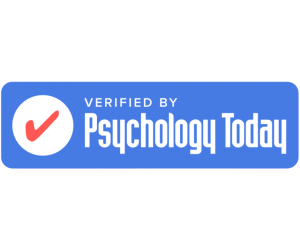If you’re thinking of starting your opioid dependence recovery journey by undergoing the rapid detox opioid treatment, the first thing you want to do is learn about the risks and dangers of rapid detox.
Contrary to popular belief, this treatment isn’t a “silver bullet” that can help people easily overcome opioid dependence in a day or two. On the contrary, it tends to cause more relapses than recoveries.
Keep reading this article to learn more about the effectiveness, side effects, adverse events, risks, and dangers of rapid detox that you should be aware of before investing in this procedure.
What is Rapid Detox?
Rapid detox is a medical procedure designed to help people struggling with opioid use disorder quickly remove drugs from their system.
Also referred to as anesthesia-assisted opioid detox, this treatment is performed under anesthesia, minimizing the intensity of opioid withdrawal symptoms.
Besides the absence of pain and discomfort, another selling point of rapid detox is speed. While it usually takes about two weeks for opioid withdrawal symptoms to subside, rapid detox accelerates the withdrawal process and compresses it within 4–6 hours. Meanwhile, the entire rapid detox process, including the hospital stay, usually takes up to 48 hours.
Nonetheless, rapid detox isn’t an opioid dependence treatment. Rather than treating opioid use disorder, it helps manage withdrawal symptoms with minimal discomfort.
In other words, rapid detox helps cleanse opioids out of the body but doesn’t eliminate opioid addiction. For this reason, many end up relapsing after receiving the treatment, which is among the most significant risks and dangers of rapid detox.
How Does Rapid Detox Work?
Essentially, rapid detox works by sedating the patient for 4–6 hours and administering an opioid antagonist to remove drugs from the system.
Opioid antagonists, such as naloxone, block opioid receptors found in the central nervous system (CNS), prompting the body to enter a state of withdrawal. After the procedure, the patient is usually hospitalized and closely monitored for a couple of days.
Since the patient undergoing rapid detox is sedated, they don’t consciously experience any withdrawal symptoms such as muscle pain, nausea, or sweating. However, although rapid detox minimizes the discomfort of opioid withdrawal, it doesn’t completely eliminate its symptoms.
In fact, it’s not unusual for people to complete the rapid detox treatment only to realize that their withdrawal symptoms may be less severe but not gone.
Cravings, nausea, and vomiting, in particular, are commonly experienced post-treatment. While these symptoms are supposed to be relatively mild, some patients experience amplified withdrawal symptoms, especially drug cravings.
This is something you should keep in mind before undergoing rapid detox. After all, intense and persistent withdrawal symptoms can be very hard to bear and thus increase the risk of relapse, overdose, and death.
Rapid Detox Health Risks and Dangers
If there’s one thing you should keep in mind about rapid detox, it’s that this procedure is generally considered very dangerous. Unfortunately, most patients who undergo this treatment are unaware of the risks and dangers of rapid detox.
A 2012 study on the adverse effects of anesthesia-assisted rapid detox found that 2 out of 75 patients died after undergoing the treatment.
One of the patient’s autopsy results revealed pulmonary edema and cardiomegaly, whereas the second patient died of hypokalemia and cardiac arrhythmia caused by rapid detox. Moreover, five experienced severe side effects that required hospitalization.
On that note, the most common side effects of rapid detox include:
- Anxiety
- Changes in thyroid hormones
- Choking
- Coma
- Delirium
- Extremely high body temperature
- Heart failure
- Irregular heartbeat
- Kidney failure
- Nausea
- Paranoia
- Psychosis
- Pulmonary diseases
- Respiratory issues
- Suicidal ideation and suicide attempts
- Vomiting
Risks Associated with Post-Rapid Detox Treatment
The risks and dangers of rapid detox don’t end once the treatment is completed.
As mentioned above, this procedure doesn’t eliminate withdrawal symptoms. Oftentimes, patients experience intense drug cravings and other withdrawal symptoms after being discharged from the detox facility. Since these symptoms can be very uncomfortable or even painful, it’s not uncommon for people to relapse soon after rapid detox.
Relapse is especially dangerous due to decreased tolerance and the fact that opioid agonists block the effects of opioids. In turn, people may take a larger amount of the drug than their body can handle, which may lead to overdose and even death.
Besides relapse, overdose, and death, rapid detox can also cause:
- Amplification of withdrawal symptoms
- Exacerbation of mental health problems
- Addiction to sedatives
Is Rapid Detox Effective?
While some detox centers praise the effectiveness of rapid detox and claim it can help people get off opioids quickly and painlessly, there isn’t enough evidence to suggest that rapid detox is more effective than other opioid detox treatments.
One study found little to no difference between patients that underwent rapid detox, clonidine-assisted detox, and buprenorphine-assisted detox in terms of treatment retention. The study also found that anesthesia-assisted rapid detox, unlike other detox treatments, was linked to three potentially life-threatening side effects.
Another study that followed up on ultra-rapid detox patients six months after completing the treatment found that this procedure, which involves heavy sedation, is associated with a very high risk of relapse. 75% of study participants reported relapse one month after the treatment.
In other words, rapid detox can be an effective method of clearing opioids out of the body. However, by itself, it isn’t sufficient to sustain long-term recovery from opioids.
The reason why rapid detox is generally ineffective for the treatment of opioid addiction is two-fold: first, this treatment doesn’t address the underlying causes of addiction but simply reduces withdrawal symptoms. Second, it doesn’t provide any additional treatment to prevent relapse and sustain recovery besides detoxing the body.
Rapid Detox Cost
Depending on the rapid detox treatment provider, the cost of rapid detox may go up to $20,000 and beyond.
Generally speaking, it is an expensive procedure, especially at well-established detox centers. Even so, the high cost of rapid detox doesn’t mean it will bring long-term results.
Moreover, rapid detox isn’t regarded as a medically necessary procedure, which means that it isn’t typically covered by insurance. Most insurance companies also refrain from covering this procedure because of the many risks and dangers of rapid detox.
ANR Treatment – A Safer Way to Treat Opioid Dependence
Now that you’re aware of rapid detox risks and dangers, you probably think that faster doesn’t always mean better.
Well, that’s not the case with Accelerated Neuro-Regulation (ANR). This modern opioid dependence treatment can help you safely and successfully recover from opioid addiction in a matter of days!
ANR is a revolutionary opioid dependence treatment that not only mitigates opioid withdrawal symptoms but also returns your brain to its pre-addiction state.
By re-regulating the endorphin-receptor system, ANR helps you heal from opioid addiction without complications, side effects, and the risk of relapse. Typically, our patients return to their daily lives addiction-free within days.
Most importantly, the ANR treatment is not only fast and effective but also safe, as it is only carried out in an ICU setting of accredited hospitals. Throughout the duration of the treatment, you’ll be monitored by compassionate and highly experienced medical staff.
ANR Clinic has helped more than 24,000 people worldwide break free from opioid addiction safely, quickly, and effectively. If you’re ready to leave opioid dependence behind or have any questions, reach out to us for a free consultation!
Why Choose ANR Treatment Over Rapid Detox
Here are some of the many advantages ANR has over rapid detox and other treatments that you should consider:
- Effectiveness. Unlike rapid detox, ANR negates the risk of relapse by addressing the root cause of opioid dependence, making it highly effective.
- Safety. Not only is the ANR treatment performed in an ICU setting by skilled medical professionals, but it is also tailored to every patient’s medical history and needs.
- Cost-effectiveness. While it’s possible to find rapid detox treatments that cost less than ANR ($20,500, including a hospital stay, personalized treatment plan, etc.), ANR is always a better investment than rapid detox since it brings long-term results.
Key Takeaways
Rapid detox is a medical procedure with a couple of enticing selling points: speed and lack of pain and discomfort.
In other words, it’s advertised as a quick and painless healing method from opioid addiction. In reality, detoxing isn’t enough to cure opioid addiction, as it fails to address the deep-seated neurobiological causes of opioid dependence.
Unfortunately, this puts patients at risk of relapse, overdose, and death, among other potentially life-threatening adverse events that may occur during and after the rapid detox treatment.
Needless to say, you should carefully consider the risks and dangers of rapid detox before opting for this procedure, especially since its safety and effectiveness leave much to be desired.







